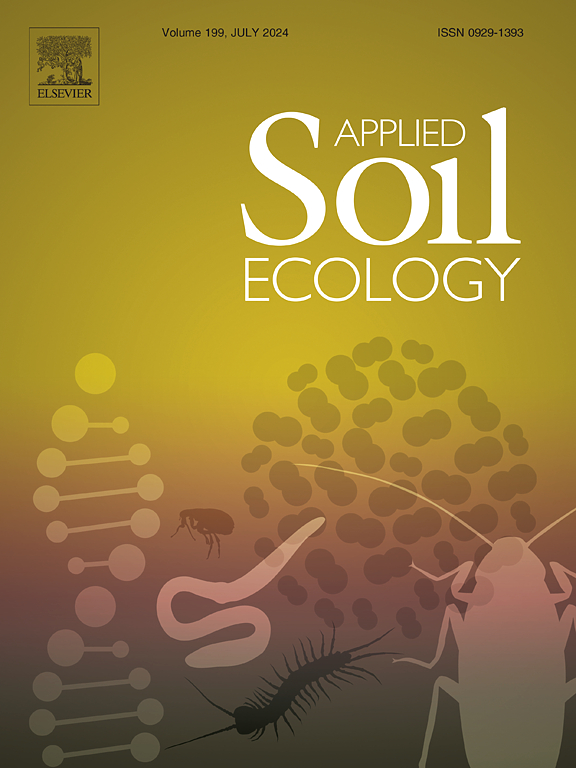Fenton technology optimization for polycyclic aromatic hydrocarbons degradation in soil
IF 4.8
2区 农林科学
Q1 SOIL SCIENCE
引用次数: 0
Abstract
An effective Fenton oxidation technology was developed to degrade PAHs in the soil, and fluorene (FLU), phenanthrene (PHE), fluoranthene (FLA) and pyrene (PYR) were selected as primary pollutants. This research presented a systematic approach to optimize the key operational parameters, such as reaction time, H2O2 concentration, Fe2+/H2O2 addition ratio, pH value, and soil-water ratio, those factors altogether affected the generation of •OH and the overall degradation efficiency of PAHs. The optimized parameter combination of Fenton technology suitable for PAHs degradation in complex soil environments was proposed. The key parameters were as follows: soil-water ratio was 2:1, pH was 3, H2O2 concentration was 11 % of the total system, Fe2+/H2O2 addition ratio was 1/8, and reaction time was 24 h. The degradation percentages for FLU, PHE, FLA and PYR were 75.4 %, 66.2 %, 60.8 % and 93.7 % in this optimized system, respectively. As the reaction time increased, the degradation efficiency of PAHs by Fenton technology reached the maximum until it became stable or slightly decreased. Appropriate H2O2 concentration and Fe2+/H2O2 addition ratio were conducive to the maximum generation of •OH, thus improving the degradation efficiency of PAHs. The pH value significantly influenced the degradation of PAHs, and the soil-water ratio had important effects on the Fenton oxidation process. By optimizing these conditions, a more thorough and profound assessment of the Fenton technology's applicability in treating actual-world PAHs-polluted soils was achievable, and it was expected to reduce the restoration cost. Meanwhile, it also contributed to the development of more efficient and sustainable soil remediation strategies.

求助全文
约1分钟内获得全文
求助全文
来源期刊

Applied Soil Ecology
农林科学-土壤科学
CiteScore
9.70
自引率
4.20%
发文量
363
审稿时长
5.3 months
期刊介绍:
Applied Soil Ecology addresses the role of soil organisms and their interactions in relation to: sustainability and productivity, nutrient cycling and other soil processes, the maintenance of soil functions, the impact of human activities on soil ecosystems and bio(techno)logical control of soil-inhabiting pests, diseases and weeds.
 求助内容:
求助内容: 应助结果提醒方式:
应助结果提醒方式:


